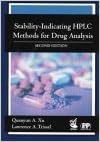Understanding the Role of Stability Testing in Global Pharmaceutical Compliance
Introduction
Stability testing is a cornerstone of pharmaceutical development, ensuring that drug products maintain their quality, safety, and efficacy over their shelf life. Beyond its scientific importance, stability testing plays a critical role in achieving regulatory compliance, particularly in a global pharmaceutical landscape. This article explores the key aspects of stability testing and its significance in meeting international regulatory requirements, ensuring market access, and safeguarding patient health.
What Is Stability Testing?
Stability testing evaluates how environmental factors such as temperature, humidity, and light affect the quality
- Determining Shelf Life: Establishing the time period during which a drug remains effective and safe.
- Defining Storage Conditions: Recommending temperature and humidity parameters for safe storage.
- Supporting Regulatory Submissions: Providing evidence to meet the requirements of regulatory agencies.
Example:
Accelerated stability testing predicts long-term stability under normal storage conditions, expediting regulatory approvals.The Importance of Stability Testing in Compliance
1. Meeting International Standards
Regulatory agencies worldwide, such as the FDA, EMA, and WHO, require stability data as part of drug approval processes. Key guidelines include:
- ICH Q1A(R2): Comprehensive framework for stability testing of new drug substances and products.
- ICH Q5C: Guidelines specific to biotechnological and biological products.
- WHO Stability Guidelines: Simplified protocols for resource-limited settings.
Impact: Adhering to these guidelines ensures uniformity and acceptance in multiple markets.
2. Facilitating Global Market Access
Stability testing supports the registration of pharmaceutical products in diverse regions by addressing climate-specific requirements:
- Climatic Zones: Testing under conditions defined for Zones I-IVb ensures compliance with regional climates.
- Regulatory Harmonization: Stability testing based on ICH guidelines simplifies multi-regional submissions.
Example: ASEAN guidelines emphasize testing for Zone IVb (hot and humid), critical for Southeast Asian markets.
3. Ensuring Patient Safety
Stability testing safeguards patient health by confirming that drug products remain effective and free from harmful degradation products throughout their shelf life.
- Degradation Products: Monitoring impurities and toxic by-products.
- Physical Stability: Ensuring consistent appearance, dissolution, and functionality.
Example: Photostability testing under ICH Q1B ensures light-sensitive drugs maintain their integrity.
Core Components of Stability Testing
1. Long-Term Testing
Evaluates product stability under recommended storage conditions, typically for 12-24 months. Parameters include:
- Temperature: 25°C ± 2°C.
- Humidity: 60% RH ± 5% RH.
Tip: Include real-time data for robust shelf-life predictions.
2. Accelerated Testing
Simulates long-term conditions at elevated temperature and humidity to expedite stability evaluations:
- Temperature: 40°C ± 2°C.
- Humidity: 75% RH ± 5% RH.
Tip: Use data from accelerated testing to support provisional shelf life.
3. Stress Testing
Identifies degradation pathways and establishes stability-indicating parameters:
- Conditions: Heat, light, oxidation, and pH extremes.
- Purpose: Ensuring robustness and predicting product behavior under stress.
Tip: Conduct stress testing early to guide formulation development.
Challenges in Stability Testing for Global Compliance
Despite its importance, stability testing presents several challenges:
- Regulatory Variability: Differences in requirements across regions may necessitate additional studies.
- Data Management: Handling large datasets from diverse studies requires advanced tools.
- Resource Intensity: Conducting long-term and stress studies demands significant time and investment.
Solution: Adopt centralized data management systems and engage regulatory experts to streamline compliance efforts.
Best Practices for Effective Stability Testing
To ensure global compliance, manufacturers should adopt these best practices:
- Plan Early: Integrate stability testing into the initial stages of product development to avoid delays.
- Validate Analytical Methods: Ensure accuracy and reproducibility for stability-indicating parameters.
- Customize Protocols: Tailor testing to meet region-specific climatic and regulatory requirements.
- Engage Regulators: Collaborate with regulatory agencies to clarify expectations and address concerns.
- Document Thoroughly: Maintain detailed records of testing protocols, results, and deviations.
Emerging Trends in Stability Testing
The stability testing landscape is evolving with advancements in technology and regulations:
- Digital Transformation: Cloud-based platforms and blockchain technology enhance data integrity and compliance.
- AI Integration: Predictive modeling tools forecast stability trends, reducing reliance on extensive studies.
- Sustainability: Adoption of energy-efficient chambers and eco-friendly packaging aligns with global environmental goals.
Future Outlook: Regulatory agencies are likely to incorporate these innovations into updated guidelines, streamlining stability testing further.
Conclusion
Stability testing is a vital process that underpins global pharmaceutical compliance, ensuring that drug products meet regulatory requirements and maintain their quality throughout their lifecycle. By adhering to international guidelines, customizing protocols for regional climates, and leveraging advanced technologies, manufacturers can navigate the complexities of stability testing and secure market access. As the regulatory landscape continues to evolve, proactive adoption of emerging trends and best practices will be key to success in the competitive global pharmaceutical industry.

